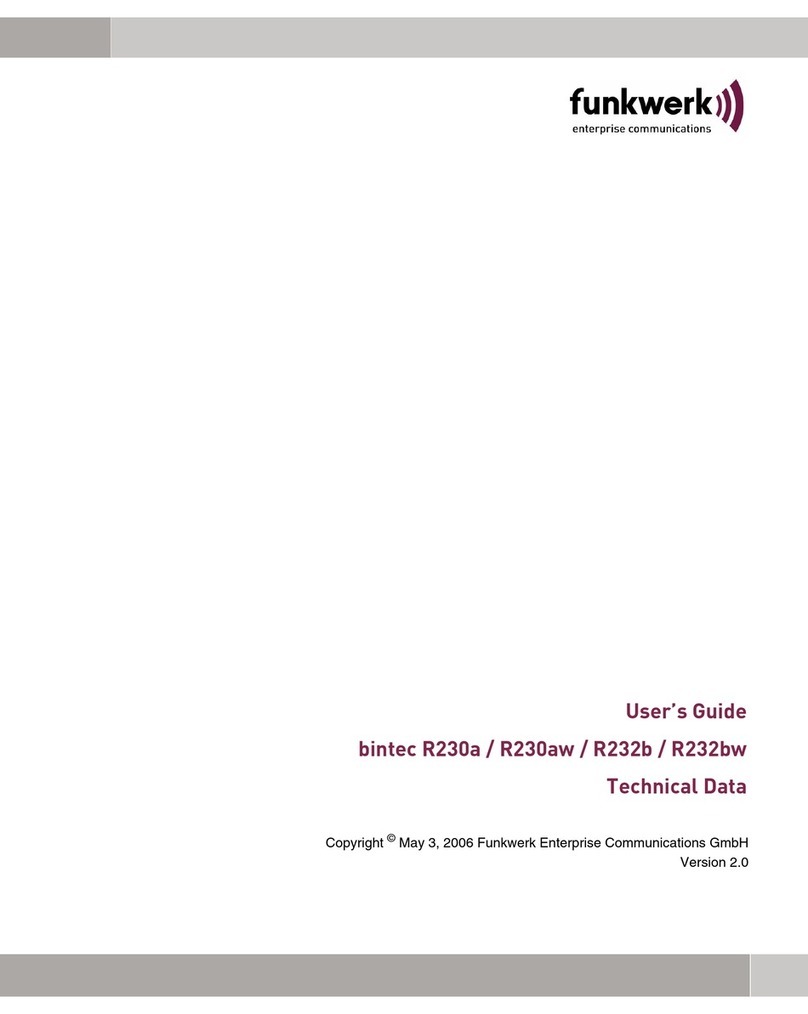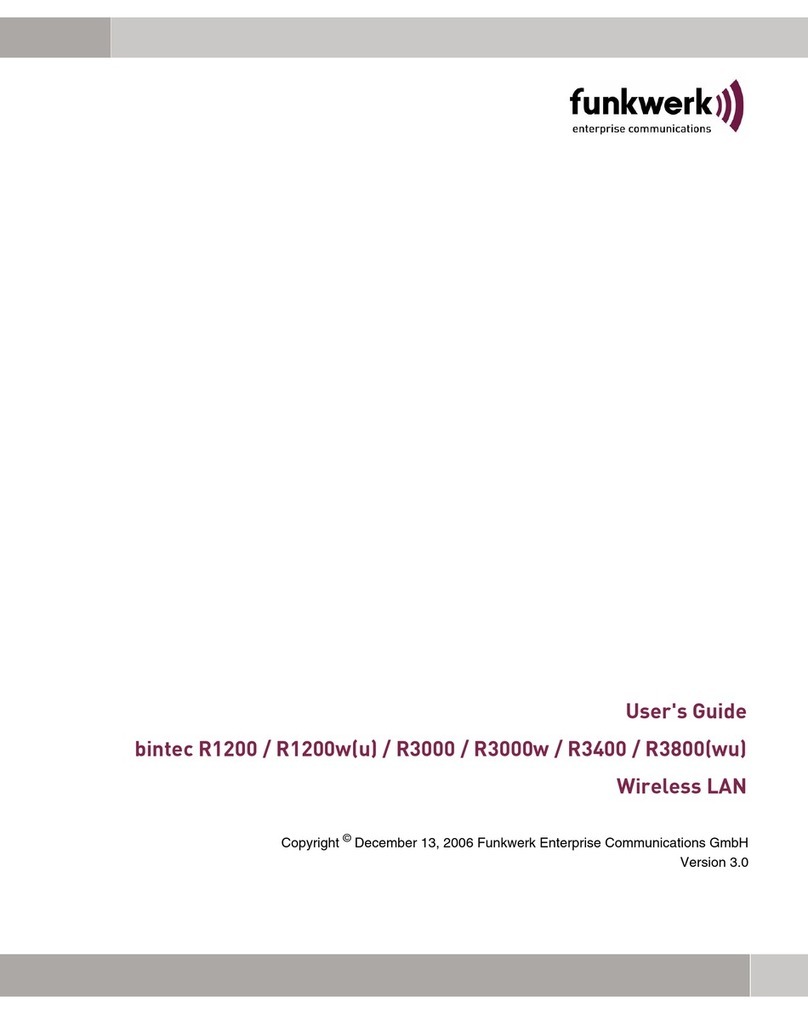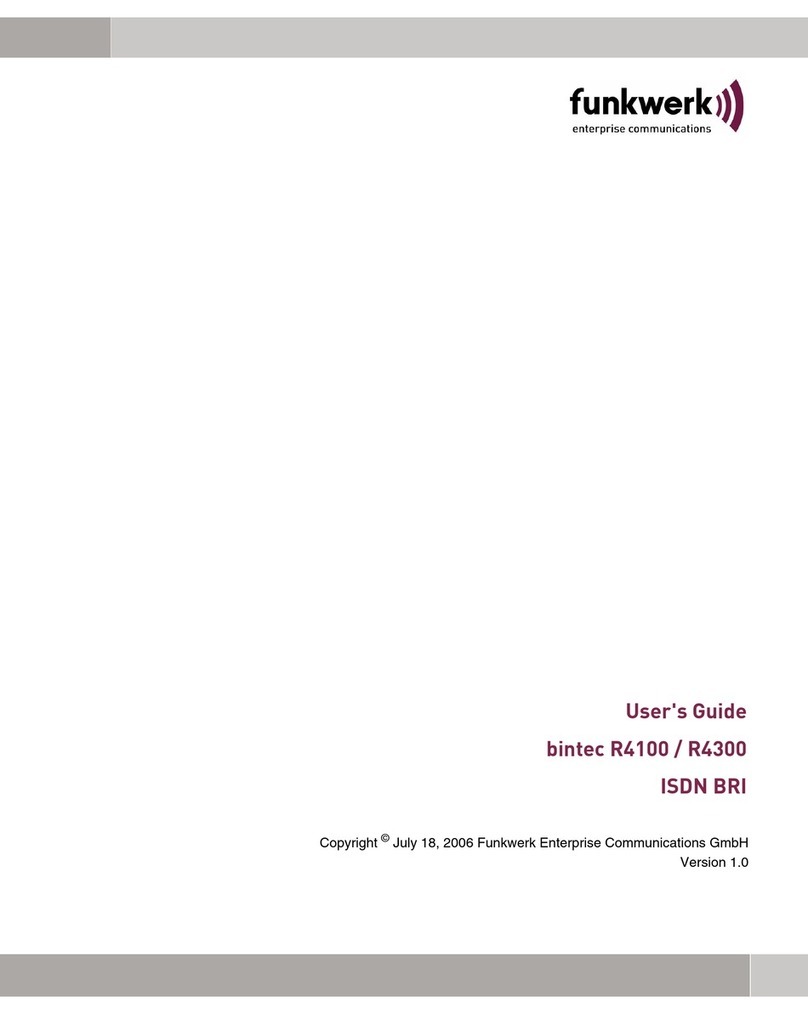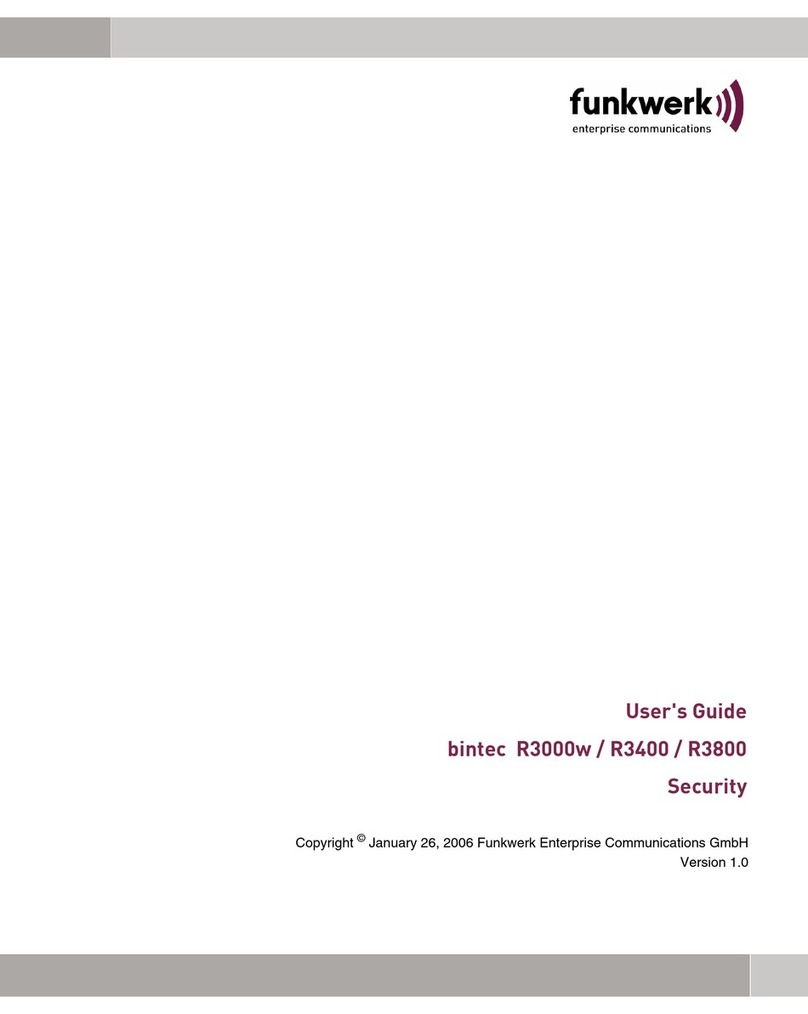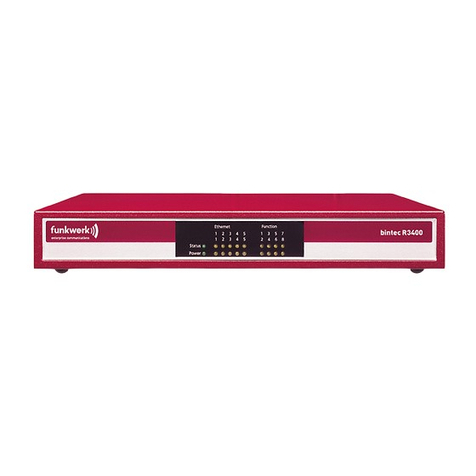
PABX Description
The PABX system is an ISDN telecommunications system at an ISDN point-to-multipoint or point-to-point connection that employs the
EuroISDNprotocol(DSS1).Analogterminaldevicescanbeconnectedviaintegratedjacks.ThePABXsystemisalsoequippedwithaninter-
nal ISDN port, allowing an ISDN terminal device to be connected at its RJ45 jacks. Fixed cabling using terminals is also possible for analog
connections. Two analog ports are routed out via a common RJ45 jack. Assignment of internal phone numbers is freely configurable bet-
ween 00... 99. Calling using analog terminal devices should be conducted using the DTMF method and these devices should be equipped
with a Flash key. Analog terminal devices that use pulse dialing can not be used for functions or codes.
Pleasenotethatthebuttons onsomeISDNterminalsavailableonthemarketmaylimittheuseofthe featuresprovidedbythePABXsystem.
All terminal devices connected to the system must be »TC Terminals Guideline« or »R&TTE Guideline« approved.
ThePABXsystem also provides allof the functionsnecessary for high-speed Internet accessfor a singlepcs, orfor complete LANsvia xDSL
orISDN.HerethefirewallintegratedintothePABXsystem,togetherwiththeNAT(networkaddresstranslation)function,providesthene-
cessarysecurity;thefunctionsDHCPserverandDNSproxyensurethat thescopeofconfiguration,bothforyourPABXsystemandyourPC,
is kept to a minimum.
Internet access for all of the PCs connected to the PABX system is provided viaone single connection (SUA - single user account);only one
set of access data is required from your Internet service providers (ISP.
Loss of power
Duringa lossof power youcan initiateor receive callsat anISDN or systemtelephone capable ofemergency operation. Othertelephonesor
terminal devices can not be reached as long as power is down.
In the event ofa loss of power, allstored contents (program and application data) are retained inthe PABX without any changes. The inter-
nal clock for the phone system is set automatically via the ISDN port on the next external call.
Cleaning
Youcancleanyour PABXwithoutanydifficulties.Use aslightlymoistened clothor ananti-staticcloth forthis. Donotuse anysolvents! Ne-
ver use a dry cloth; electrostatic charges could damage the electronics in the system. Always ensure, however, that no moisture penetrates
into your PABX, as this could result is damage to the PABX.
Safety notes
Important safety information for handling the PABX system
·Unauthorizedopening ofthe PABXand improperrepairs mayresultinriskof injuryfor theuser.
Attention:Unplugthe230VACplug-inpowersupplybeforeremovingtheenclosurecoverofthePABXandworking
on the cable terminal bay. Replace the top on the PABX before plugging the power connector back in.
Plug the plug-in power supply unit into the 230 V ~ socket so that the connecting cord to the PABX system points
downward.
·Donot exposethe insideofthe PABXor theplug-in powersupply toany liquids.Thiswouldpose arisk ofelectrical
shockand canalso destroy thedevices.
·Youshould notconnect ordisconnect anylines duringthunderstorms.
·Onlyterminals withSELV and/orwhich complywith ETS300047may beconnected tothe PABXsystem. Thisregu-
lationis fulfilledwhen approvedterminal devicesare usedas intended.
·Thedistance betweenthe plug-inpower supplyunitand the PABXandtothe ISDNconnection shouldnot exceed1.
5meters sothat standard connectinglines canbe used.
·ThePABXis operatedwith 230V ACusing theplug-in powersupply unit.Please ensurethat the electricaloutlet
(groundingoutlet) for thePABX(and for additional deviceswhere required)is installedsuch thatit isfreely accessi-
bleatalltimesand that itis installedby aqualified electricianto preventany risksof personal ormaterial injury/da-
mage! Whereat allpossible, providea separate powercircuitfor the 230V connectionof yourPABX system.This
protectsyour PABXfrom short-circuitsthat mayoccurinother in-houseequipment.
PABX Description
1
